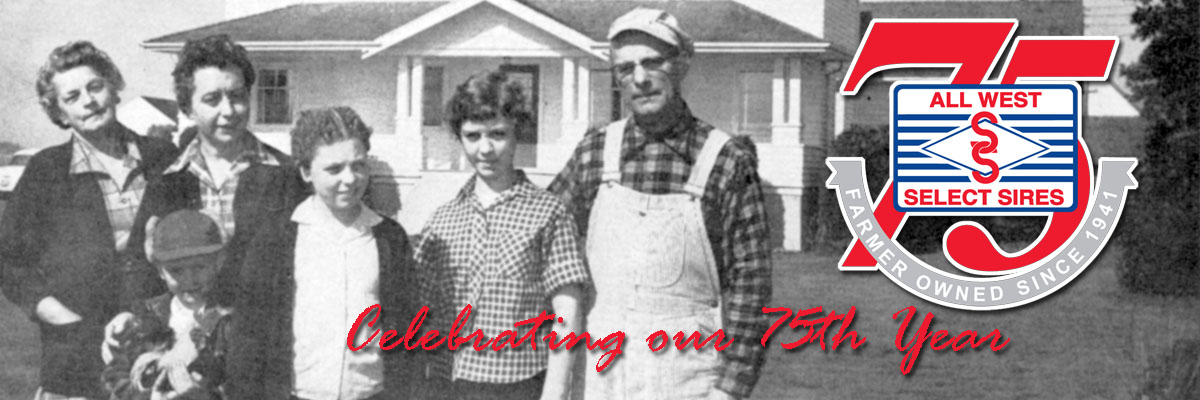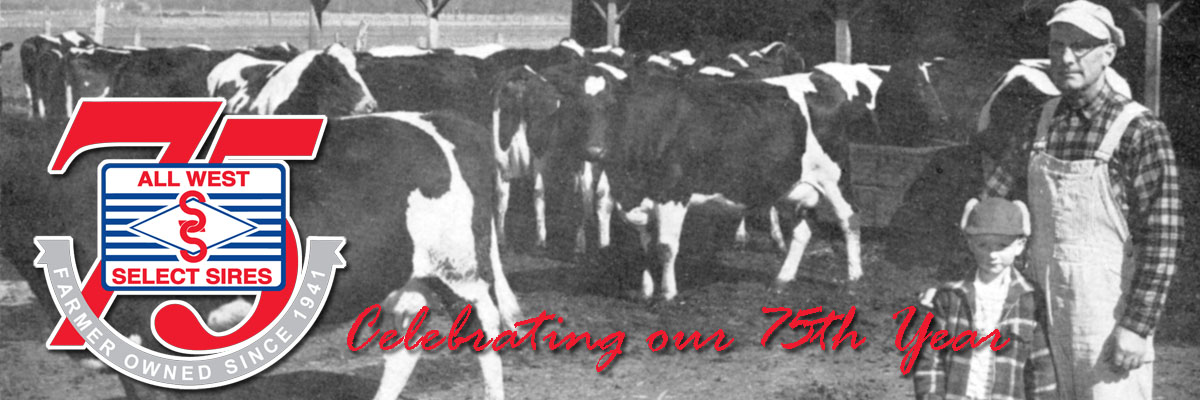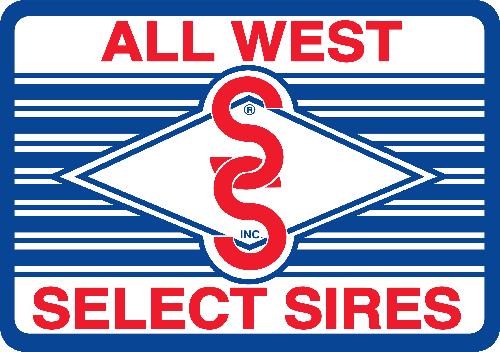
From left fo right: Miss Lucille Axelson, Mrs. Russell Axelson, with son Maynard and his pet bantam rooster Banjum; daughters Linda and Kathleen and Russell Axelson. The picture shows the beautiful Axelson farm home in the Conway area.
THE SKAGIT DARIGOLD: People In Darigold…The Russell Axelson Family (April 1960)
By June W. Priest
“This is our Maynard,” said Madge Axelson, Russell’s wife, introducing her small son, when I arrived at her home and she had shut off the power lawn mower she was running. Lucille, Russell’s sister, was in the kitchen bending over a mop, and Russell came in from outside in response to a call. We went into the attractive living room for our talk.
Russell began at once to relate the history of his dairy farm beginning with his father. “My father, Elmer Axelson,” he said, “came from Sweden in 1889. He worked for R. E. Whitney six years and then went to the E. A. Sissons. In 1903 he bought the present farm of 160 acres from a man called Captain Loveland. Prior to this he had farmed on rented land in Beaver Marsh.”
“When father came to the place, all but 30 acres was in tall timber and he cleared it completely. He also diked out the salt water. Father served for many years as commissioner in the diking district and as a member of the school board both at Fir and in the union high school district after the consolidation with Mount Vernon. Final plans for gravity flow drainage in District 13 were made before his passing.” “I graduated from high school in Mount Vernon in 1932, and went one year to junior college. From the time I was 14-years-old, I milked cows in the summer time between school. After my year in junior college my father offered to send me to Washington State College. I told him that, if he would let me manage the herd in my own way, I would stay home.”
At this point the boy, Maynard, came in from his egg hunt. Madge asked him how many he had found and he showed us two. Madge remarked that he is very interested in all the produce of the farm.
“In 1933 father gave me six Jersey heifers to milk through the summer for him. I started testing on the standard plan in 1934 and have tested cows continuously since that time. I started shipping milk to Darigold on July 8, 1935. As time went on I had some Holstein heifers come fresh. About 1940 I bought my father’s pure-bred cattle.”
“In February 1940 I met Madge,” Russell continued. Madge was Magdalen Reichert who came from North Dakota on a visit. “She was introduced by her girl friend, right here. My father passed on in 1946, leaving the place to us jointly, Lucille, Madge and me. We then moved onto the home place. Father and I had farmed 80 acres of land down by the Wiley Brothers’ place and he sold this land to John Wiley.”
“Do you ship milk from a tank?”
“Yes, we were one of the first five tank shippers in this area, starting May 1, 1952. We were shipping factory milk until we had a flood in 1951. How deep did the water get in the house, Madge?” Russell asked, turning to his wife. She replied that it had been 18 inches deep. “During this time,” Russell resumed, I moved my cows up to my brother Emanuel’s, place a half mile away and milked them there for six weeks until pasture time. The flood wrecked our milking barn so we built a three-stall, pipe-line, milking parlor with overhead bulk feed. Keeping records of its cost I found it came to $10,000. In March, 1952 we started shipping Grade A milk”
Russell began telling about further improvements he had made on his place, saying “In the summer of 1952 we dismantled the old cow barn and made a loafing shed of it. It was filled in with dirt and a cement foundation laid on each side. In 1954 we improved the barnyard with a cement slab and sidewalks.” Russell feeds in the barn and then feeds pea silage in the bunks on the slab. He pastures in the summer, clips the pastures and fertilizes about once a year.
“In 1959,” he said proudly, “we had 28.7 cows averaging 522 pounds of butterfat and 15,000 pounds of milk, which is the best they averaged at any time.”. Russell is an easy-going man and pleasant, but business like. He also is quite firm concerning points he considers important. He is a director in the Skagit County Holstein Club and secretary-treasurer of the Skagit County Dairy Federation.
 Russell Axelson and son Maynard and part of the fine Axelson herd of Holsteins
Russell Axelson and son Maynard and part of the fine Axelson herd of Holsteins

 .
. .
. .
. .
. .
. .
.